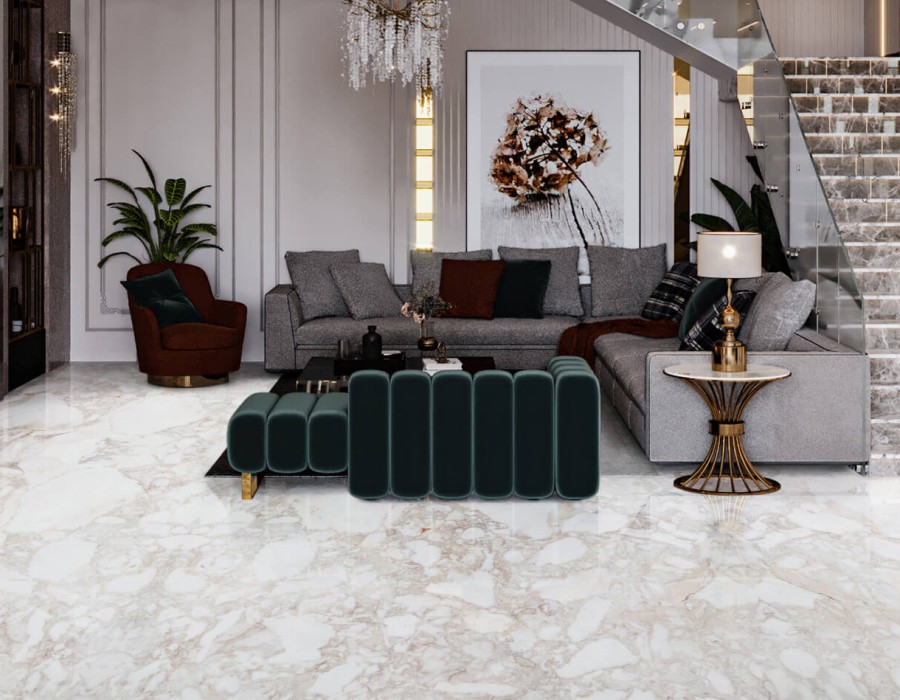Marble has long symbolized luxury, grace, and timeless beauty in Indian architecture. From majestic temples to modern homes, it continues to redefine elegance. But for many buyers, understanding what shapes the marble price in Delhi remains a mystery. Why does one variety cost ₹80 per sq. ft. while another is priced above ₹600? The truth lies in the incredible journey marble undertakes—from mountain quarries to the polished surfaces in your living room. This blog explores every step that influences its value and reveals what makes some marbles truly worth their price.
1. Extraction: Where the Journey Begins
The marble story starts deep within the earth's crust, where limestone transforms under immense pressure over millions of years. When quarrying begins, it's not just about cutting rock—it's about precision and safety. Heavy machinery, skilled labor, and advanced extraction techniques ensure each block is removed without damaging its structure.
Marble sourced from renowned Indian quarries like Kishangarh, Makrana, and Ambaji is known for purity and strength. Imported marbles, like those from Italy or Turkey, involve even more complex extraction and shipping logistics. Naturally, these additional efforts and distances add to the overall marble price in Delhi.
2. Cutting and Processing: Shaping Raw Beauty
Once extracted, the marble blocks are transported to processing units where they're cut into slabs of desired thickness. Using diamond wire saws and high-precision machines, craftsmen transform rough blocks into smooth, polished sheets.
This phase is crucial—it determines the quality and durability of each slab. Advanced polishing, resin filling, and finishing techniques enhance the marble's natural shine. The more refined the process, the higher the cost. High-end Italian and Indian processing units ensure minimal wastage, superior polish, and consistent color—factors that significantly influence the market price.
3. Quality and Grading: Sorting Perfection
After processing, each slab is graded according to its color consistency, surface finish, and absence of cracks.
- Grade A: Uniform color, fewer veins, and flawless texture—used for premium interiors.
- Grade B or C: Visible natural patterns, minor fissures, or slight variations—best for budget projects.
- The grading ensures transparency between sellers and buyers. When you visit a reputed marble dealer in Delhi, these grades help you understand why one variety may be priced higher than another.
4. Origin Matters: Indian vs. Imported Marble
A major component of marble pricing is its source. Indian marbles like Makrana, Ambaji, and Udaipur varieties are mined locally, making them cost-effective and widely available. They are durable, easy to maintain, and perfect for both traditional and modern spaces.
Imported marbles, however, bring a touch of exclusivity. Italian, Turkish, and Spanish marbles like Carrara, Statuario, and Botticino feature intricate veining and softer tones, adding unmatched elegance. Their import duties, freight costs, and limited availability increase the marble price in Delhi, especially among luxury buyers who value uniqueness.
5. Finishing and Design Customization
The finish you choose has a direct effect on price. A mirror-polished finish is the most sought after—it enhances shine and reveals the natural patterns vividly. Honed, matte, or leather finishes offer a more subtle, contemporary appearance but may cost less.
Design customization—like water-jet cutting, engraving, or inlay work—further raises the price. These intricate details require expert craftsmanship and precision, adding both aesthetic and financial value to the stone.
6. Transportation and Handling Costs
Marble is heavy, fragile, and sensitive to handling. Transporting it safely from quarries to Delhi showrooms demands special packaging and careful logistics. Breakage during transport can lead to major losses, so suppliers invest in proper crates, cushioning, and experienced drivers.
Moreover, installation in homes or offices involves additional labor, adhesives, and tools. When professional marble installers ensure perfect leveling, matching veins, and seamless joints, it reflects in the overall project cost.
7. Market Demand and Seasonal Influence
Like all commodities, marble prices rise and fall with market demand. During peak building seasons—before festivals or in early summer—demand surges, pushing prices upward. Conversely, during off-peak months, suppliers may offer discounts or special packages.
Global market conditions, fuel prices, and quarry production also play roles. A well-informed buyer can plan purchases around these cycles to get better deals without compromising on quality.
Summary
Understanding the marble price in Delhi is about more than comparing numbers. It's about appreciating the artistry, technology, and effort that go into transforming a raw block of stone into a masterpiece for your home. Every rupee you spend covers not just material but also craftsmanship, durability, and long-term beauty. Whether you choose imported luxury marble or high-quality Indian options, the right stone can elevate your interiors for decades.
Frequently Asked Questions (FAQ)
Q1: What is the average range of marble price in Delhi?
Indian marble prices range from ₹50–₹250 per sq. ft., while imported varieties can cost between ₹300–₹800 or more depending on quality and origin.
Q2: Which marble type is best for flooring?
Makrana, Italian Carrara, and Botticino are among the most popular for their strength and elegant finish.
Q3: Can marble be customized for unique patterns?
Yes. Techniques like water-jet cutting and inlay work allow personalized designs for floors, walls, and countertops.
Q4: How can I identify genuine marble suppliers in Delhi?
Always check for transparency in pricing, grading details, and after-sale support. Reputed suppliers often provide product certifications.
Conclusion
From quarry to your living space, marble undergoes a journey of transformation guided by precision, passion, and expertise. The marble price in Delhi reflects every detail of that journey—from extraction and transport to polishing and placement. When you invest in authentic marble, you're not just buying a stone—you're embracing a legacy of craftsmanship and natural beauty. Choose wisely, value quality, and let your home shine with the elegance that only true marble can offer.
Source Link- From Quarries to Homes: Understanding the Real Marble Price in Delhi Market





Comments